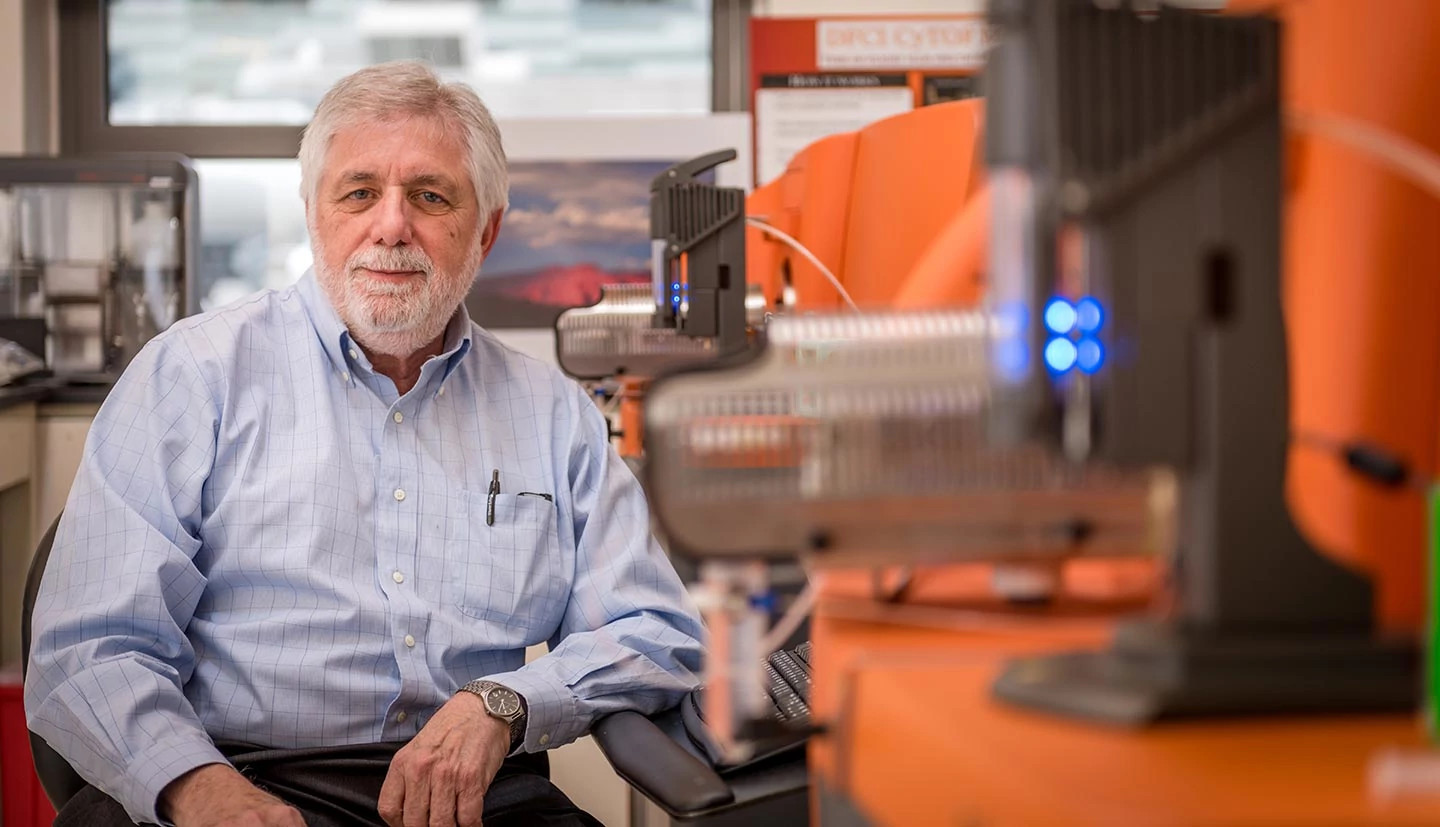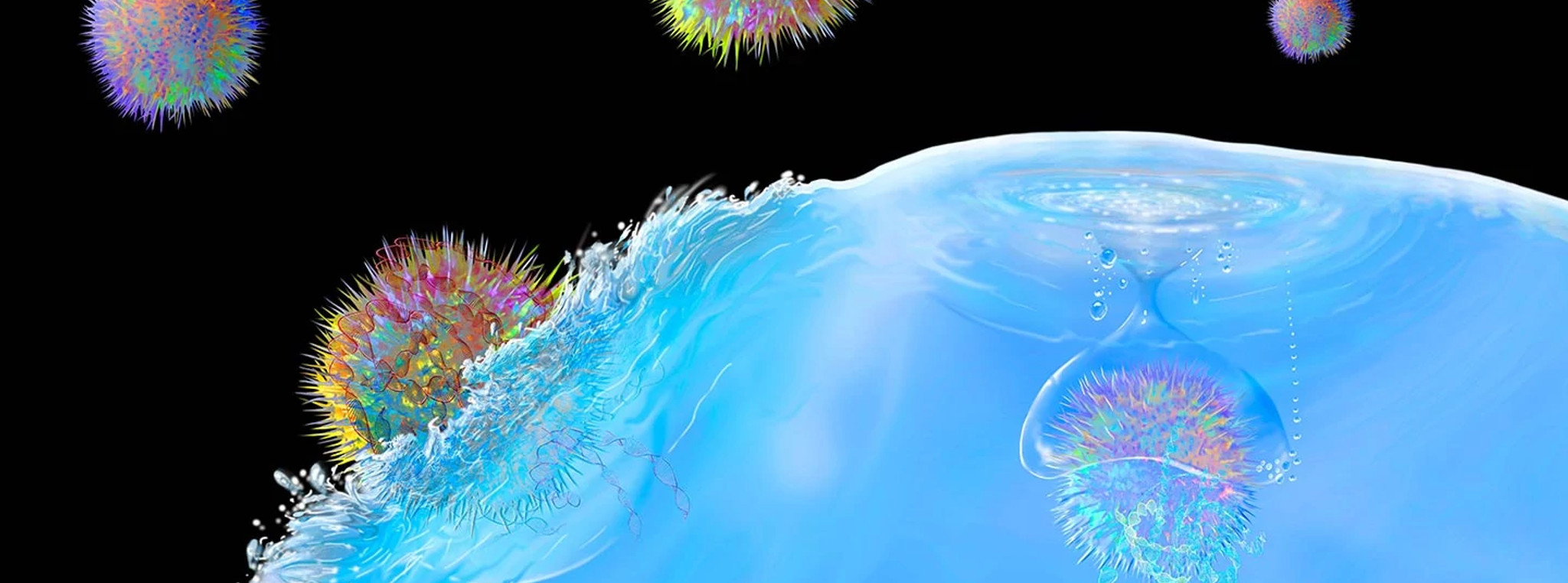
Dana-Farber Scientists Power Ongoing Innovation in Cell Therapies for Cancer
April 15, 2021
BPDCN
Cellular Therapies
CAR T-Cell Therapy
Immunotherapy
By Robert Levy
It's been more than 130 years since scientists first brought tumor tissue into focus under a microscope lens. Little did they imagine that what they saw harbored the elements of a powerful form of cancer therapy.
Tumors are hardly models of harmony. They contain cancer cells by the millions, side by side with cells from their arch enemy, the immune system. Ideally, such close quarters combat would work to the advantage of the immune system, honed by eons of evolution to detect and destroy cancer cells. But cancer cells have used the same eons to develop evasive maneuvers against an immune attack: disguising themselves as normal cells, converting immune cells into promoters of tumor growth, and deploying a variety of other strategies to foil or fool the immune system's radar.
To overcome cancer's trickery, scientists have developed a new form of therapy built from immune cells themselves. Known as cell therapy — or, more formally, immune effector cell (IEC) therapy — the approach uses genetic engineering and other techniques to upgrade immune cells' ability to identify, surveil, and ultimately destroy malignant cells.
The best-known form of IEC therapy, largely because it was the first out of the gate, is chimeric antigen receptor or CAR T-cell therapy, which is created by equipping a patient's own immune system T cells with a receptor that binds to tumor cells and spurs an immune attack on them. It has been joined by a platoon of other cell therapies — natural killer (NK) cells, engineered T cell receptor (TCR) therapy, and tumor-infiltrating lymphocytes (TILs) — all designed to improve on the immune response bequeathed by nature.
Car T-Cell Therapy: How Does It Work?
Car T-cell therapy, like all forms of cancer immunotherapy, seeks to sharpen and strengthen the immune system's inherent cancer-fighting powers. It involves treating patients with modified versions of their own immune system T cells — white blood cells that help protect the body from disease.
It is hard to overstate the speed at which the field is moving. At Dana-Farber, which has been at the forefront of testing and developing many of these therapies, the first clinical trial of an experimental CAR T-cell therapy opened in 2015. As of early 2021, five commercially-produced CAR T-cell therapies have been approved by the Food and Drug Administration (FDA) as standard treatment for adults with aggressive B-cell lymphoma or mantle cell lymphoma, children and young adults with aggressive B-cell lymphoma or acute lymphoblastic leukemia (ALL), and, most recently, adults with follicular lymphoma and multiple myeloma.
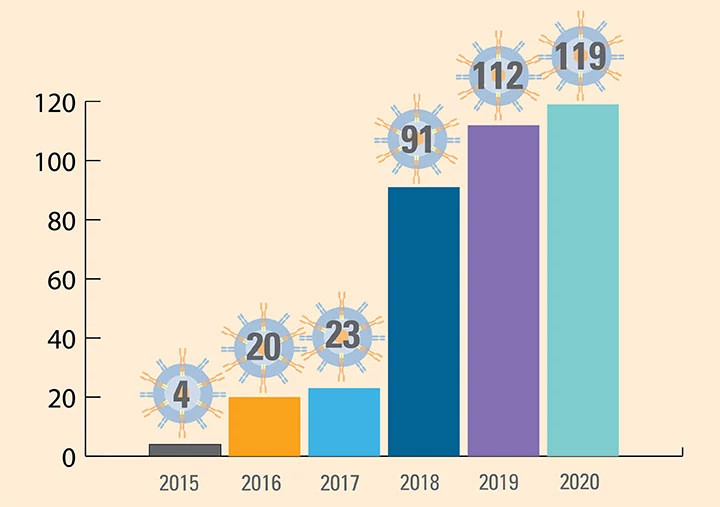
Impressive as this list is, it's destined to grow. Behind it is a research pipeline stocked with CAR T and other cell therapies for a wide range of cancer types — approaches in every stage of development from initial laboratory studies to tests in model systems to final-stage clinical trials in patients. Dana-Farber researchers are involved all along the way, with chemical biologists developing new ways of engineering cells, the Connell and O'Reilly Families Cell Manipulation Core Facility (CMCF) making CAR T cells for clinical trials, and physician-scientists leading trials of new therapies. As 2021 began, the Institute was conducting 20 trials of CAR T-cell therapies, two of NK cell therapies, two of TCR therapies, and two of TILs.
"Immune effector cell therapies are the focus of a tremendous amount of research at both the basic-science and clinical research level," says Sarah Nikiforow, MD, PhD, technical director of Dana-Farber's Immune Effector Cell Therapy program. "For all the benefit they've shown and for all the progress we've made, we're still in the early stages of exploring their potential."
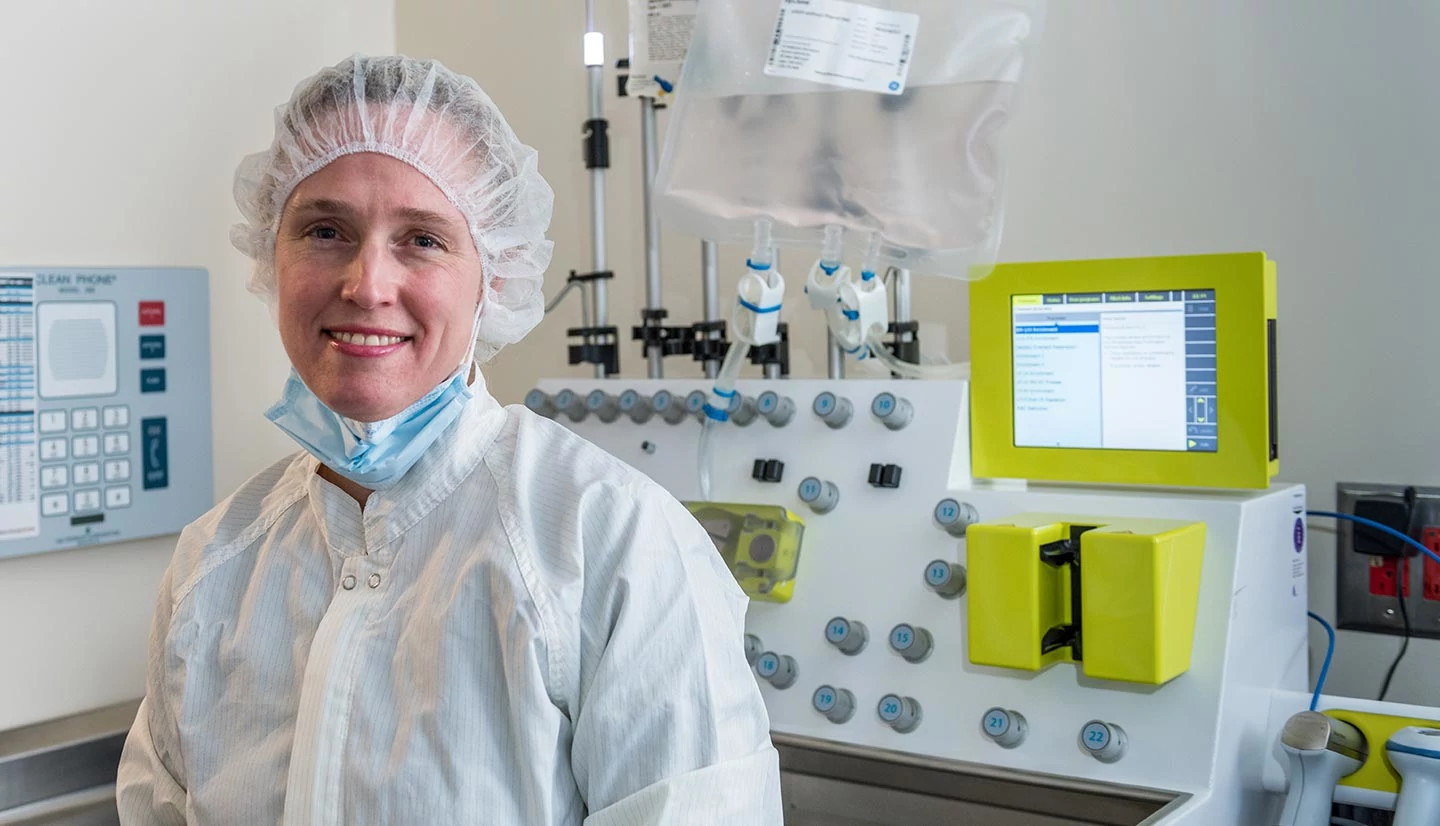
Cell Therapy Adds a New Option to Cancer Treatment
Cell therapy is often said to be a new, "fifth pillar" of cancer treatment — joining surgery, radiation therapy, chemotherapy, and targeted therapy in the cancer armamentarium — but it actually represents a more fundamental change. For the past hundred-plus years, human intervention, in the form of surgery, radiation, or drugs, has been the driving force of cancer treatment: the physician introduces an outside agent or action that directly targets cancer cells. It is humanity vs. cancer, with no intermediary. In cell therapy, the immune system takes the lead, with science and technology providing an assist. The immune system brings millennia of experience in fighting cancer; the new therapies supplement that with human ingenuity.
CAR T-cell therapy scored its initial success in patients with blood cancers. In clinical trials, it generated early remissions in more than 80% of patients with B-cell ALL and nearly half of patients with B-cell non-Hodgkin lymphoma, all of whom had stopped responding to other forms of treatment.
Results like that captured the attention of the scientific world and set in motion a worldwide effort to explore the capabilities of this new therapy, applying it to other kinds of cancer, asking whether it can be made even more effective, and working on versions that could be pre-made rather than manufactured individually for each patient. The field today vibrates with the energy and creativity more commonly associated with a new art form, as researchers in academia and industry probe its possibilities and test its potential.
The current roster of clinical trials of CAR T-cell therapies at Dana-Farber for patients with lymphoma illustrate this range. Trials differ by the type of lymphoma being treated and the therapy being tested (different CAR T-cell therapies may target different proteins on cancer cells). Some trials involve CAR T-cell therapies alone, some involve combination with other therapies. Some target rare types of lymphoma, others deal with more common forms. Some are for adults, others are for children and young adults.
As a research institution, we have a lot of optimism about where this field is headed," says Caron Jacobson, MD, MMSc, medical director of Dana-Farber's Immune Effector Cell (IEC) Therapy program, which supports clinical trials of IEC therapies at the Institute. "Clinical trials of CAR T-cell and other IEC therapies have the potential to benefit patients who have run out of other treatment options. If we can offer trials to patients in that position, we both benefit patients and further the field as a whole. 
As the number of IEC therapy trials at Dana-Farber has grown, so has the size of the staff that supports them. "A standard clinical trial might require a visit to the clinic for blood work once every three weeks. A patient in an IEC trial, by contrast, might be in the hospital for two to three weeks, with continuous monitoring of vital signs, symptoms, and other information," Jacobson explains. "These steps require an extremely high level of coordination, quality control, and documentation."
CAR T-cell therapies have so far proven far more effective in hematologic cancers such as lymphoma, leukemia, and multiple myeloma than in solid tumors. There are a variety of reasons for this. Solid tumors don't want uninvited guests: their toxic, immune-suppressing interiors discourage T cells from entering or staying very long. And whereas B-cell lymphoma and ALL cells all carry a single protein marker that can be targeted by CAR T cells, solid tumor cells carry multiple different markers. Nevertheless, researchers have recently developed new varieties of CAR T cells specifically for solid tumors. Several of these therapies are now in clinical trials at Dana-Farber for lung, breast, cervical, head and neck, gastrointestinal, and other solid tumors.
Each of these trials benefits from the experience Dana-Farber physician-scientists gained in using CAR T-cell therapies to treat patients with hematologic malignancies. The IEC program led by Jacobson ensures that that expertise is shared.
"Each solid tumor disease center at the Institute now has a representative on the IEC program," Jacobson says. "They propose trials that they're interested in opening, and we offer personnel to support them, including clinical research coordinators and research nurses. We also have physicians trained in cell therapy who can work with solid tumor physicians in managing the patients on these trials."
And because Dana-Farber is home to basic scientists as well as clinical trial leaders, these trials do far more than test whether a new cell therapy is safe and effective. "We're able to learn something from virtually every patient, because we're able to collect blood, bone marrow, and tumor samples from them and study the samples at a genetic level and an immunological level to understand how these therapies work, why they sometimes don't work, and how they might be improved," Jacobson remarks.
Exploring New Cell Therapy Capabilities
The development of CAR T-cell therapies for solid tumors may just hint at their ultimate versatility. For example, researchers are engineering CAR T cells that are available "off the shelf" rather than having to be custom-made for each patient from his or her own T cells. Other scientists are working on CAR T cells that secrete immune-stimulating substances, potentially increasing the cells' effectiveness. Others are developing CAR T cells that target not just one but multiple cancer cell proteins. Even the process of administering CAR T-cell therapies is being scrutinized for greater efficiency. Doctors envision a day when treatment with a CAR T-cell therapy involves not a weeks-long hospital stay, but an outpatient visit. Each of these presents considerable technical and scientific challenges, but researchers are working to overcome them.
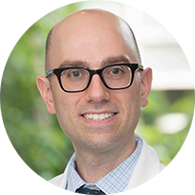
"There are two things that keep me enthusiastic about this field," says Eric Smith, MD, PhD, director of Translational Research, Immune Effector Cell Therapies, at Dana-Farber. "First, the ceiling for genetically modifying cells is so incredibly high and there are so many uses for this technology. It has already demonstrated an ability to produce deep remissions and potentially cures in patients who previously lacked any therapeutic option."
Reason number two is Dana-Farber-centric. "We can move this field so rapidly because we have a cell product manufacturing facility — the CMCF — right here. We can move new therapies from the lab into patient testing in 12-18 months, which is light speed in a field like this. We have clinicians with tremendous experience in delivering cellular therapies, as well as basic scientists, immunologists, and disease-specific researchers who really want to collaborate. It's a tremendous advantage."
Smith was a physician-scientist at Memorial Sloan Kettering Cancer Center when the initial reports on CAR T-cell therapy trials were published. "I saw the exciting results and really was all in," he says. "It changed the course of my research." He went on to lead the development of one of the first CAR T-cell therapies for multiple myeloma, which produced a response in 92% of patients in a clinical trial. He joined Dana-Farber in 2020 and is leading the effort to build a "preclinical pipeline" to carry novel cell therapies from the laboratory bench to the CMCF, where they will be manufactured, and ultimately to patients.

Feeding that pipeline are efforts such as the research by Kai Wucherpfennig, MD, PhD, chair of Cancer Immunology and Virology and director of Cancer Immunotherapy Research. Some cancer cells, under stress because of damage to their DNA, deck themselves in the MICA protein, which invites natural killer (NK) cells to come and destroy them. But, as if the tumor cells develop second thoughts about their death wish, they often shed this protein to hide themselves from an immune attack. Dana-Farber scientists engineered antibodies that target the site of this shedding, essentially locking MICA in place. "We're essentially taking this normal process of immune surveillance of cancer cells and supercharging it," Wucherpfennig says.
That's step one of the new approach. The second step involves a technological tour de force that essentially gives cells a new identity. Scientists at a biotech company take skin cells and reprogram them to an embryonic state — turning them into "induced pluripotent stem (iPS) cells" that can be steered into becoming any cell in the body. The biotechnicians turn the iPS cells into T cells and NK cells with a CAR — a genetically engineered receptor — that specifically targets the MICA protein on tumor cells.
In studies in animal models carrying human-like tumors, the two-step therapy showed "substantial efficacy" Wucherpfennig says. He and his colleagues are currently planning out the first clinical trial of the therapy in patients with prostate cancer, a good candidate for this approach because the tumor cells tend to have a large supply of MICA.
On another front, researchers at Dana-Farber and Massachusetts General Hospital (MGH) have created molecular on and off switches to control the activity of CAR T cells and potentially reduce the toxic side effects associated with the therapy. Powerful as it is, CAR T-cell therapy sometimes triggers cytokine release syndrome, an inflammatory reaction that can cause neurological, pulmonary, or other problems. By applying a small protein tag to CAR T cells, researchers were able to ticket the CAR for destruction — temporarily blocking the activity of the CAR T cell without killing the cell — when patients were treated with the drug lenalidomide. The technique may make it possible to fine-tune the intensity of CAR T-cell activity and dial it back when it becomes excessive.
The long-term goal is to have multiple different drugs that control different on and off switches so scientists can develop ever-more powerful complex cellular therapies," says Dana-Farber's Chair of Medical Oncology Benjamin Ebert, MD, PhD, who led the research with Max Jan, MD, PhD, and colleagues at MGH. 
Exploring Other Forms of Cellular Therapy
Trailing CAR T cells in stage of development but not in promise or potential are other forms of cellular therapy, including NK cells, tumor-infiltrating lymphocytes, and engineered T-cell therapy.
NK cells possess some natural advantages as cancer fighters. As the first wave of defenders against infection and disease, they display a take-on-all-comers spirit that results in a rapid, if brief, attack on tumor tissue. They're ruthless, literally ripping cancer cells open and poisoning them, and mobile, able to catch cancer cells circulating in the body. But they lack T cells' longevity and ability to remember previous infections. And they don't multiply as heartily as T cells when infused into patients.
Researchers have overcome some of these shortcomings by developing NK cells with a heightened ability to remember, proliferate, and persist in the body. These enhanced cells, dubbed memory-like NK (or mlNK) cells, have achieved impressive results in early clinical trials in patients with acute myelogenous leukemia (AML), myelodysplastic syndrome (MDS), and other cancers.

As head of Dana-Farber's NK cell program, Rizwan Romee, MD, leads both laboratory and clinical research in mlNK cells. One clinical trial, currently open, is testing the therapy in patients with AML or MDS who have relapsed after a stem cell transplant. One of the trial participants was the first person with blastic plasmacytoid dendritic cell neoplasm, a rare aggressive blood cancer, to be treated with mlNK cell therapy. "He's now approaching five months after treatment and is doing spectacularly," Romee says. "Here is someone who had really, really limited options for treatment, and we were able to help him." While it's too early to draw conclusions about the long-term effectiveness of the therapy in patients on the trial, the early signs are encouraging, Romee remarks.
Another trial, led by Glenn Hanna, MD, is testing a combination of mlNK cell therapy, an immune checkpoint inhibitor drug, and a long-acting immune-signaling agent in patients with head and neck cancers.
"Because of the promising activity mlNK cells have shown in these trials, we're exploring how to make them work even better," Romee says. "One way is to arm them with CARs" — to equip them with receptors keyed to specific proteins on tumor cells. He and colleagues are currently planning a clinical trial of these "CAR mlNK cells" in patients with ovarian cancer that has become resistant to standard lines of treatment. With colleagues in Dana-Farber's Center for Prevention of Progression, he is developing a trial of CAR mlNK cells in patients with smoldering myeloma, a precursor of multiple myeloma. The trial will examine whether the therapy can prevent the precursor condition from advancing to myeloma itself.
Expanding the Uses of Cell Therapy
The future of cell therapies extends beyond CAR T- and NK-cell therapies, and beyond cancer. Investigators are optimistic that the FDA will soon issue its first approval of a TIL therapy for patients with melanoma. Clinical trial results in these patients have been so encouraging that Dana-Farber researchers are working to open trials of TILs in lung cancer and cervical cancer.
One approach currently under development is the use of a CAR T-cell therapy trial for patients with a non-cancer condition — bullous pemphigus, an autoimmune disease of the skin. Research efforts will focus on whether CAR T cells targeting the immune cells that cause the disease can be effective in taming it.
"It's an incredibly rapid pace," Eric Smith says. "There are many groups, both in academia and industry, that are prioritizing developing cellular therapies because they can be so powerful and translate to the clinic so rapidly. With the improvements in synthetic biology and cellular engineering, and with manufacturing moving at a rapid pace, there's enormous momentum toward creating the cell therapies of the future."
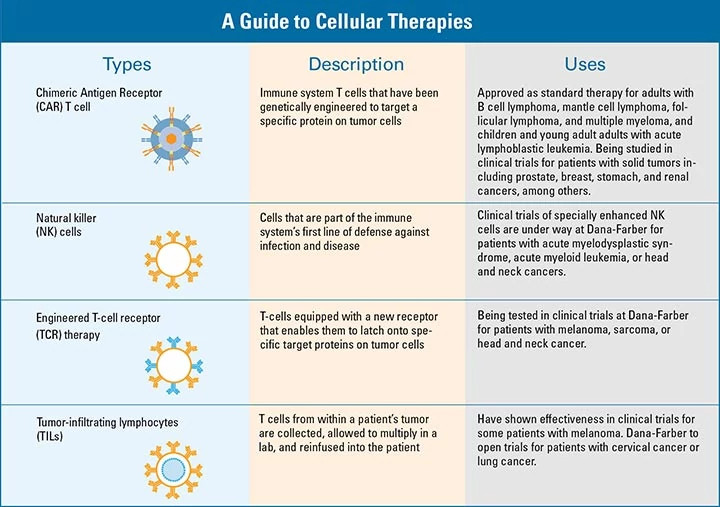
Dana-Farber's Connell-O'Reilly Core Facility
Like a great teacher or pilot, cell therapies are made, not born. Although they derive from living things — immune system cells — they are inherently a manufactured product, made by enhancing the cells' ability to identify, attack, and kill cancer cells.
Creating such therapies requires not only a high degree of technical expertise, but also a facility designed to meet exacting standards for product purity, consistency, and safety. At Dana-Farber, the Connell and O'Reilly Families Cell Manipulation Core Facility (CMCF), enables the Institute to provide the latest cell-based therapies to patients while creating new therapies for study in clinical trials.
Since the lab was established in 1996, the CMCF has grown rapidly and is now located in a new 30,000 square-foot facility dedicated to supporting novel cellular therapies. The CMCF produces CAR T cells, memory-like natural killer (mlNK) cells, and a variety of other adoptive cell therapies, as well as making tumor vaccines and processing blood-forming stem cells for transplantation. In 2020, the facility processed cells for more than 900 adult and pediatric stem cell transplants and supported more than 60 clinical trials involving cell therapies.
While most CAR T-cell therapies are made by commercial labs, the ability to produce them in-house is a significant advantage, says CMCF Executive Director Jerome Ritz, MD. "For a commercial product, the patient's cells need to be shipped to an outside facility for manufacture and testing and then shipped back. It can take weeks or months to complete the process. At the CMCF, we can have a CAR T-cell therapy ready to infuse within seven to eight days."
The CMCF is a particular asset for early-phase clinical trials. "When a potential cell therapy emerges from the laboratory, we work with investigators and local companies to develop a process for manufacturing these cells on a large scale for patients enrolled in the first clinical trials evaluating the safety and efficacy of these products," Ritz remarks. "There's a critical role for academic facilities like ours in supporting early-phase clinical trials."
The CMCF has recently invested in technology to speed up the manufacture of CAR T and other cellular therapies. Four CliniMACS Prodigy instruments, which automate the entire process of CAR T-cell therapy production, are in use for multiple trials of new therapies. "Automated systems make more consistent products and reduce the time and effort involved by half to two-thirds," Ritz says.
